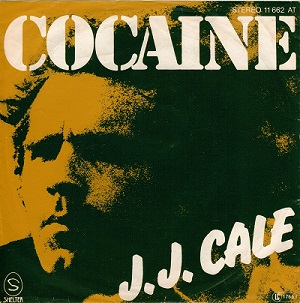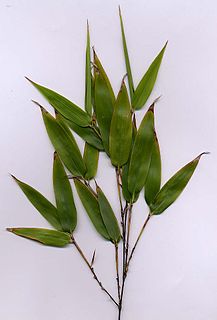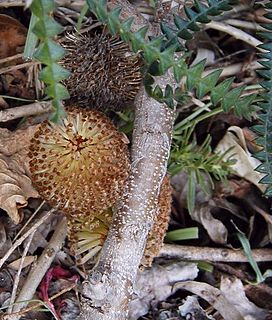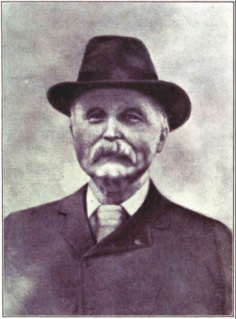John Bain Mackay (5 February 1795 – 9 August 1888) was a nurseryman based in Clapton, London noted for his introductions of Australian and South American plants into cultivation. [1]

London is the capital and largest city of both England and the United Kingdom. Standing on the River Thames in the south-east of England, at the head of its 50-mile (80 km) estuary leading to the North Sea, London has been a major settlement for two millennia. Londinium was founded by the Romans. The City of London, London's ancient core − an area of just 1.12 square miles (2.9 km2) and colloquially known as the Square Mile − retains boundaries that follow closely its medieval limits. The City of Westminster is also an Inner London borough holding city status. Greater London is governed by the Mayor of London and the London Assembly.

Australia, officially the Commonwealth of Australia, is a sovereign country comprising the mainland of the Australian continent, the island of Tasmania and numerous smaller islands. It is the largest country in Oceania and the world's sixth-largest country by total area. The neighbouring countries are Papua New Guinea, Indonesia and East Timor to the north; the Solomon Islands and Vanuatu to the north-east; and New Zealand to the south-east. The population of 25 million is highly urbanised and heavily concentrated on the eastern seaboard. Australia's capital is Canberra, and its largest city is Sydney. The country's other major metropolitan areas are Melbourne, Brisbane, Perth and Adelaide.

South America is a continent in the Western Hemisphere, mostly in the Southern Hemisphere, with a relatively small portion in the Northern Hemisphere. It may also be considered a subcontinent of the Americas, which is how it is viewed in the Spanish and Portuguese-speaking regions of the Americas. The reference to South America instead of other regions has increased in the last decades due to changing geopolitical dynamics.
He was born in Echt in Aberdeenshire in Scotland. [1] At his Clapton Nursery, he propagated plant material sent to him by William Baxter from Australia and James Anderson from South America. [1] In addition to his nursery, he had a showroom in King's Road, Chelsea. His foreman, Hugh Low, took over the nursery in 1831. [1]

Echt is an Aberdeenshire crossroads village in northeast Scotland with a population of approximately 300 people. Echt has a number of prehistoric remains, including the so-called Barmekin of Echt which is on a hill to the northwest. There is also the Cullerlie stone circle near Sunhoney Farm, which may date from the Bronze Age.
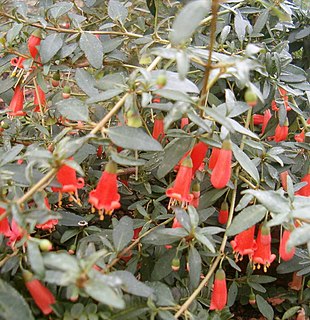
The Clapton Nursery also known as Mackay's Clapton Nursery and later Low's Clapton Nursery was a plant nursery established in the early 19th century by John Bain Mackay in Upper Clapton, London, and noted for its introductions of Australian and South American plants into cultivation.
William Baxter was an English gardener who collected in Australia on behalf of English nurserymen and private individuals. He had developed his horticultural reputation as gardener to the Comtesse de Vandes in Bayswater, London, many of the plants he had nurtured being used for illustrations in Curtis's Botanical Magazine. He was the first privately financed plant collector to be sent to Australia, his mission being to collect seeds and roots for the London seedsman F. Henchman.
Mackay became a Fellow of the Linnaean Society. [1] He died in Totteridge, Hertfordshire on 9 August 1888 at the age of 93. [1]
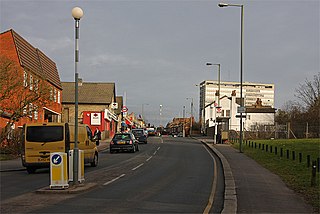
Totteridge is an old English village, currently a protected picturesque residential area of the London Borough of Barnet in North London, England. It is a mixture of suburban development and open land situated 8.20 miles (13.05 km) north north-west of Charing Cross.

